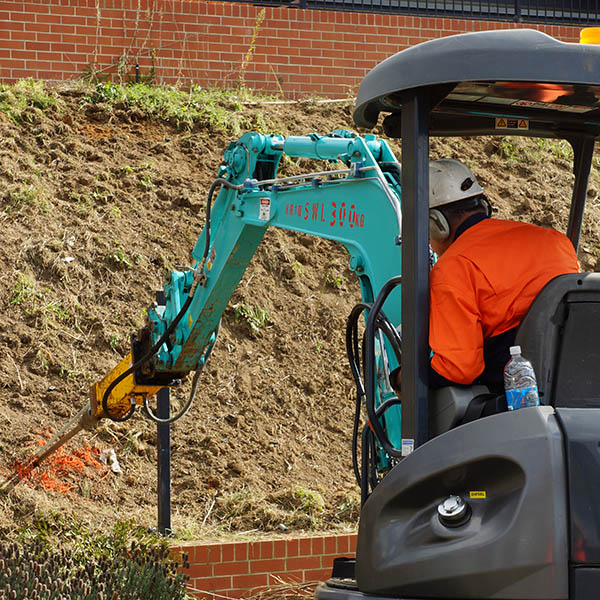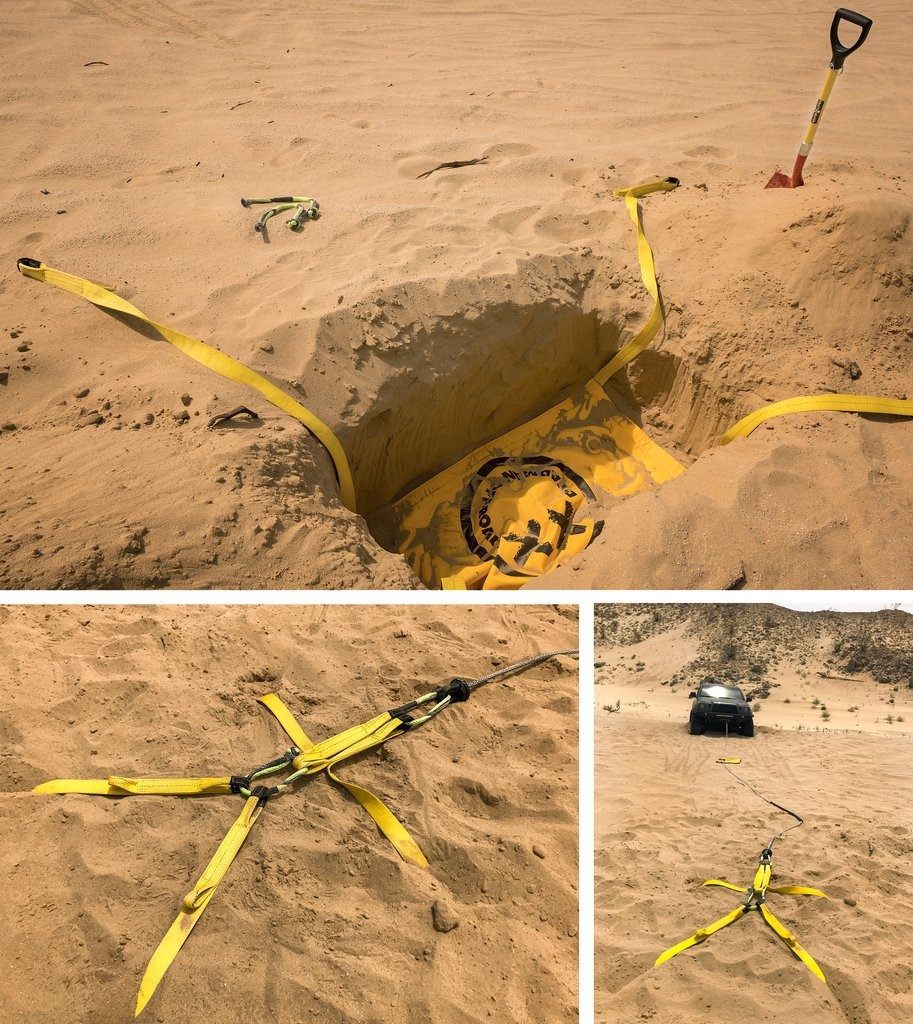Why Every Construction Project Needs construction site anchors to Withstand Lateral Loads
Wiki Article
How Sturdy Earth Anchors Work: A Comprehensive Overview to Soil Anchoring Solutions
Durable Earth anchors play an essential function in providing security and support in various building and construction applications. By installing deeply into the ground, they withstand vertical and lateral pressures effectively. Various kinds of anchors deal with various dirt problems, making them flexible. Understanding their auto mechanics and installation methods is vital for optimizing efficiency. What aspects influence their efficiency, and exactly how do they contrast to conventional approaches? The responses might surprise you.Comprehending Durable Earth Anchors
Durable Earth supports offer as essential components in various building and landscaping tasks, giving stability and assistance in tough dirt problems. These anchors work by being embedded into the ground, where they stand up to upright and side forces. Their style permits secure attachment to frameworks, guaranteeing they continue to be secured against dirt movement or external loads.The performance of sturdy Earth anchors mainly relies on the sort of soil and the anchor's installation depth. Proper installment techniques are important, as they determine the anchor's holding capability. Ecological factors, such as moisture and freeze-thaw cycles, can additionally influence performance.These supports are often used in applications ranging from securing fencings and retaining wall surfaces to supporting short-lived frameworks during damaging weather. Comprehending the principles behind heavy-duty Earth supports is vital for experts looking for to improve the resilience and safety of their projects.Types of Heavy-Duty Earth Anchors
Various kinds of sturdy Earth supports are created to satisfy details demands based upon dirt conditions and job requirements. Helical supports, including screw-like blades, are efficient in softer dirts, using high tons abilities and simple installation. Driven supports, which are inculcated the ground, are ideal for rough terrains and give instant tons assistance. Tie-back anchors are commonly made use of in preserving wall applications, enabling lateral assistance by securing right into the ground at an angle. Another kind is the cast-in-place anchor, perfect for concrete applications, as they are incorporated into foundations for boosted security. Ultimately, dirt screw anchors are versatile choices that can be utilized in various dirt types, offering trusted stress and compression capabilities. Each type offers distinctive applications, making certain security and safety in construction and landscaping jobs. Understanding these choices permits informed decisions in picking the suitable Earth securing remedy.The Mechanics of Soil Anchoring

Recognizing the mechanics of dirt anchoring requires an assessment of various sorts of Earth supports and their installment techniques. Each anchor type provides one-of-a-kind qualities that influence its efficiency in various dirt problems. Correct installation methods are necessary for taking full advantage of the securing system's stability and performance.
Types of Earth Anchors
Earth anchors, vital parts in soil anchoring systems, come in several kinds, each designed for details applications and dirt problems. One of the most typical kinds consist of screw anchors, which are twisted right into the ground, providing strong lateral resistance. Helical supports include blades that permit efficient installation in various dirt kinds, making them appropriate for both momentary and long-term applications. Driven anchors, typically made from steel, are inculcated the dirt and work in dense or rough environments. Auger anchors make use of a helical layout to facilitate installation in softer dirts. Plate anchors consist of a level plate buried horizontally, dispersing lots over a bigger location, ideal for applications requiring high load capabilities in natural dirts.Installment Techniques Discussed
Proper installation techniques are crucial for the efficiency of soil anchoring systems. The process commonly begins with website assessment, validating the picked location can sustain the anchor's lots. After determining the right anchor kind, proper opening deepness and angle have to be established. The installation entails driving the anchor right into the ground making use of specific tools, such as manual or hydraulic motorists, to achieve ideal embedment. Post-installation, tensioning the anchor is essential to assure security; this is frequently verified with lots testing. Furthermore, bordering dirt problems should be checked to stop displacement. Following these methods not only boosts the support's efficiency however also extends its life-span, providing trustworthy support for different applications.Applications of Heavy-Duty Earth Anchors
While sturdy Earth supports are usually connected with construction and landscaping, their adaptability reaches a variety of applications across different markets. In civil design, they offer necessary assistance for retaining wall surfaces, ensuring stability in areas prone to soil erosion. The marine sector uses these supports for safeguarding anchors and marinas, stopping activity triggered by currents and trends. In addition, in the telecom sector, heavy-duty Earth anchors are substantial for maintaining cell towers and other high structures against wind pressures. Agricultural applications additionally benefit, as these supports can safeguard structures like greenhouses and livestock fence, guaranteeing they withstand rough weather. In sustainable power jobs, such as wind farms, Earth anchors play an important function in protecting generator structures, improving overall safety and efficiency. This wide range of applications highlights the flexibility and dependability of sturdy Earth supports across numerous fields.Advantages Over Traditional Anchoring Approaches
Conventional anchoring approaches have long been counted upon for stability, sturdy Earth supports use considerable advantages that improve efficiency and effectiveness. One significant advantage is their exceptional load-bearing capability, which enables them to endure greater pressures without failing. This strength makes them excellent for demanding applications, such as in building and construction and utility installations.Additionally, sturdy Earth anchors are developed for much deeper installment, giving higher stability in numerous soil conditions, including loose or sandy soils. Their resistance to rust and ecological variables guarantees a longer life expectancy and lowered maintenance prices contrasted to conventional methods.Moreover, these anchors can be installed with very little disruption to the surrounding location, maintaining the integrity of the landscape. Generally, heavy-duty Earth anchors present a reliable and reliable solution for anchoring needs, going beyond the restrictions commonly related to traditional anchoring techniques.Setup Process and Finest Practices
The setup process for soil anchoring options starts with detailed preparation and website assessment to ensure peak efficiency. Following this, a detailed installment overview gives clear instructions for effective execution (heavy-duty earth anchors). Sticking to these finest methods is important for accomplishing trusted and durable anchoring outcomesPrep Work and Site Evaluation
Effective preparation and detailed site evaluation are vital steps in the installment of dirt anchoring services. Prior to setup, the dirt type need to be examined to determine its bearing ability and suitability for anchoring. Carrying out a geotechnical survey can give essential info concerning dirt make-up, wetness levels, and potential ground motion. Additionally, recognizing existing frameworks, plant life, and try this out energies is necessary to prevent disturbance during installation. The location should be free from particles and obstacles to assure safe gain access to for tools. Weather must also be kept an eye on, as damaging conditions can impact both security and installation effectiveness. By carefully preparing the site and reviewing all relevant aspects, the chance of successful support performance is significantly boosted.Step-by-Step Setup Overview
A detailed installment process is essential for achieving optimal efficiency of soil anchoring services. The installment starts with picking the appropriate anchor kind and ensuring the site is free from debris. Next, correct hole placement is determined based on load demands. As soon as the area is developed, openings are drilled to the specified depth and diameter utilizing the right devices. The support is after that put right into the opening, ensuring it is lined up properly. After protecting the anchor, soil is backfilled and compacted to boost stability. It is vital to follow manufacturer standards throughout the procedure. A post-installation evaluation confirms that the anchors are properly positioned and functioning as planned, providing trustworthy assistance for the designated application.
Maintenance and Evaluation of Earth Anchors
Normal maintenance and assessment of Earth supports are vital for guaranteeing lasting performance and security. Regular checks enable the early discovery of concerns such as rust, loosening, or soil movement. Assessors must try to find signs of rust or deterioration on the support parts, especially at the connection factors. Furthermore, the bordering dirt should be examined for disintegration or modifications in dampness web content, which this page can impact anchor effectiveness.It is recommended to establish a regular inspection schedule, preferably at the very least annually, depending on environmental conditions. During inspections, all noticeable elements should be cleaned to remove dirt or particles that might conceal possible problems. Any signs of distress, such as tilting structures or unusual settling, must motivate immediate analysis. Correct documentation of examinations can assist in tracking support performance with time and assist in timely maintenance actions, making sure the supports stay reputable and practical.Often Asked Concerns
What Products Are Heavy-Duty Earth Anchors Typically Made From?
Sturdy Earth anchors are commonly created from sturdy products such as galvanized steel or stainless steel, making sure strength and resistance to deterioration. These materials provide durable assistance and stability in various soil conditions and applications.Just How Do Soil Problems Impact Anchor Efficiency?
Dirt problems greatly influence support efficiency. Aspects such as soil type, moisture material, and compaction impact the support's grip and stability, with cohesive dirts usually offering far better resistance than sandy or loosened soils, impacting total performance.
Can Heavy-Duty Earth Anchors Be Reused After Removal?
Sturdy Earth anchors can be recycled after removal, supplied they are evaluated for damages and wear. Appropriate cleaning and maintenance improve their long life, making certain effective performance in subsequent installments when problems enable risk-free reinstallation.What Are the Environmental Effects of Making Use Of Earth Anchors?
The ecological influences of using Earth anchors consist of possible soil disturbance, disturbance of neighborhood ecological communities, and possible contamination of groundwater. However, if used properly, their benefits often exceed these problems, advertising security in different applications.How Do I Choose the Right Anchor for My Project?

Report this wiki page